In October of 2017, I received canoe pole instruction from the premier canoe poler in the nation. While paddling the Allagash River with Allagash Canoe Trips and Bullmoose Patrol, I was able to learn from Chip Cochrane. Chip Cochrane has won the national canoe poling championship multiple times as reported by Canoe & Kayak Magazine. This was like a young quarterback getting an hour lesson with Tom Brady.
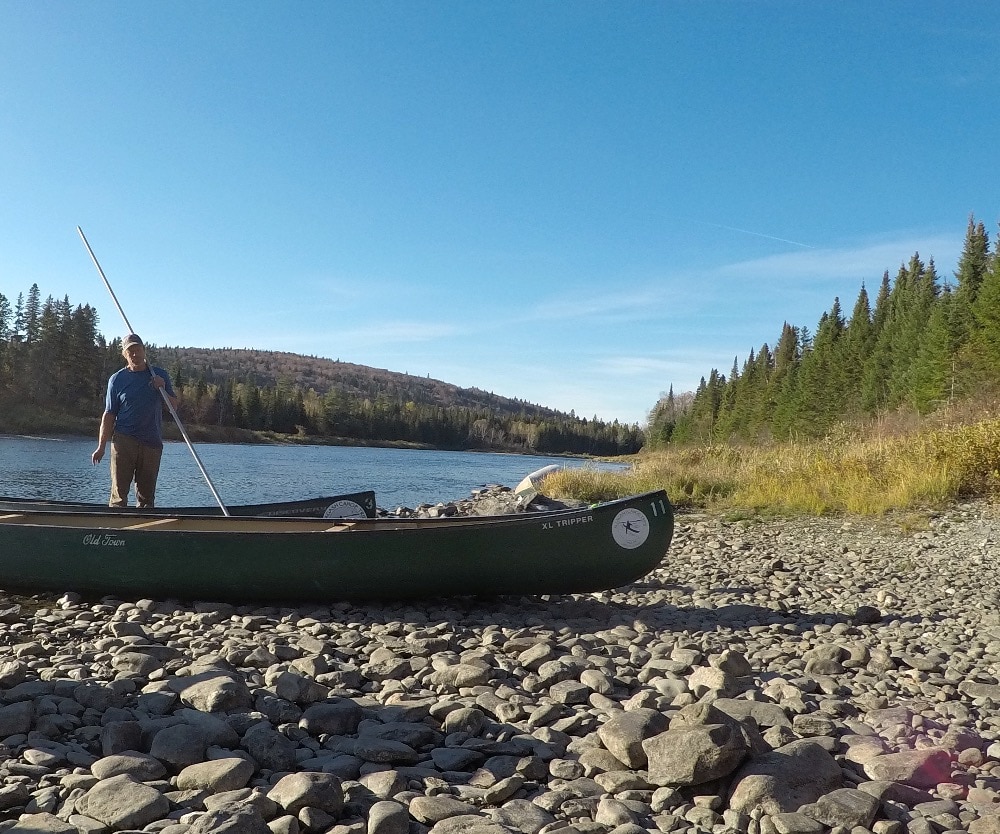
Chip Cochrane from Allagash Canoe Trips giving us a poling tutorial before setting us loose
Related: Canoe poling workshop on the Allagash Wilderness Waterway
First time canoe poling
After the instruction, I jumped in a canoe and canoe poled up the Allagash River. I did not tip and many of the fellow paddlers did not believe them when I told them it was my first time canoe poling. Even though I had never poled until that moment, I was in the bow of the canoe many times growing up when my dad used the technique; therefore, I had a good idea about the proper form.
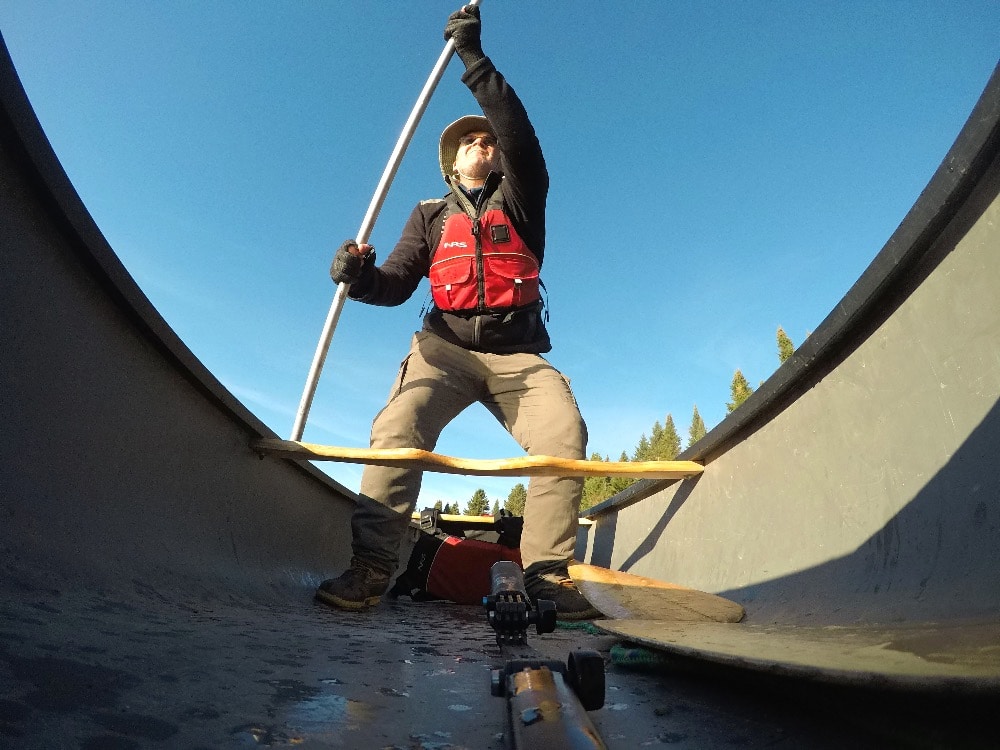
First time canoe poling on the Allagash River
Enter the Hayden Canoe Pole
The short instruction and hands on experience hooked me. I could not wait to try it again. Unfortunately, the Allagash River trip was in October. I had to wait until the next paddling season. In the meantime, I had plenty of time to secure a pole. I searched online and also considered making the canoe pole myself. The reason I chose a Hayden Canoe pole was the ease of shipment and the detachable pole option. The 12 foot detachable pole broke apart into two six foot segments. This was important to me because I have a Chevy Trax. The two six foot segments fit in the back of my mini SUV.
I completed the order on the Hayden Canoe Pole website, and very shortly after, I received a personal email that my order had been received and would ship soon. I received another email a few days later with the tracking number. The order cost $105.00 with the shipping.
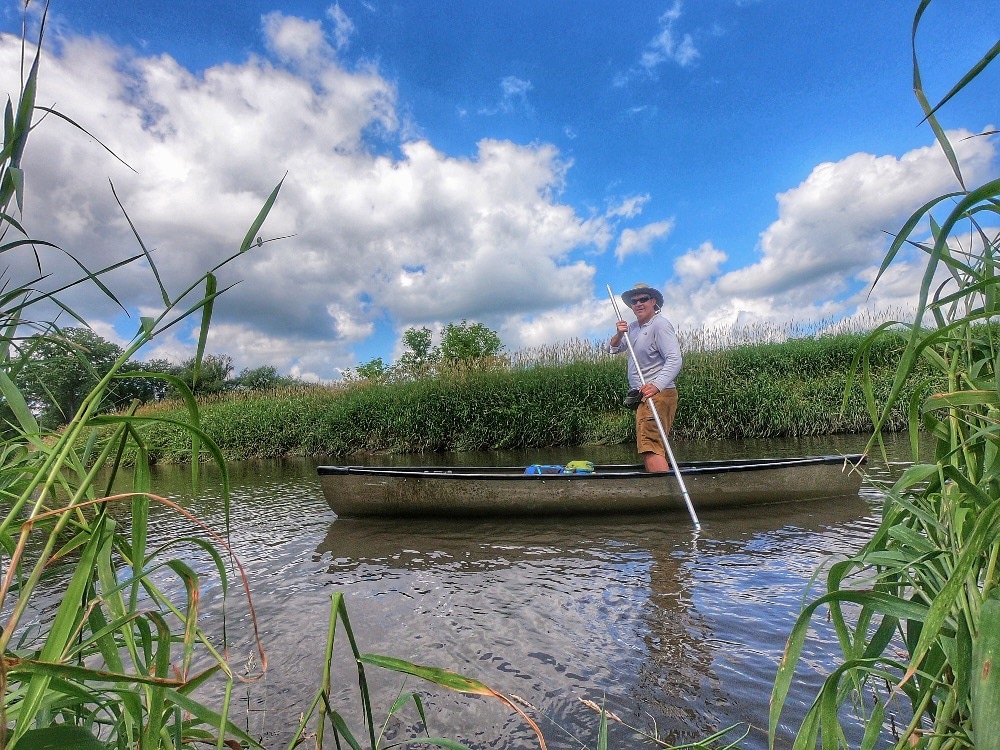
Set up the GoPro at the putin near Rockbridge to capture a poling shot along the Driftless Region Pine River
Pine River canoe poling
In March, I attended Canoecopia and spoke with Mark from Pine River Paddle and Tube LLC. I drove up and stayed the night at Wildcat Mountain State Park. The next day I met Mark, and he set me up with a canoe on the Pine River near Rockbridge.
Related: Pine River Driftless Region canoe poling
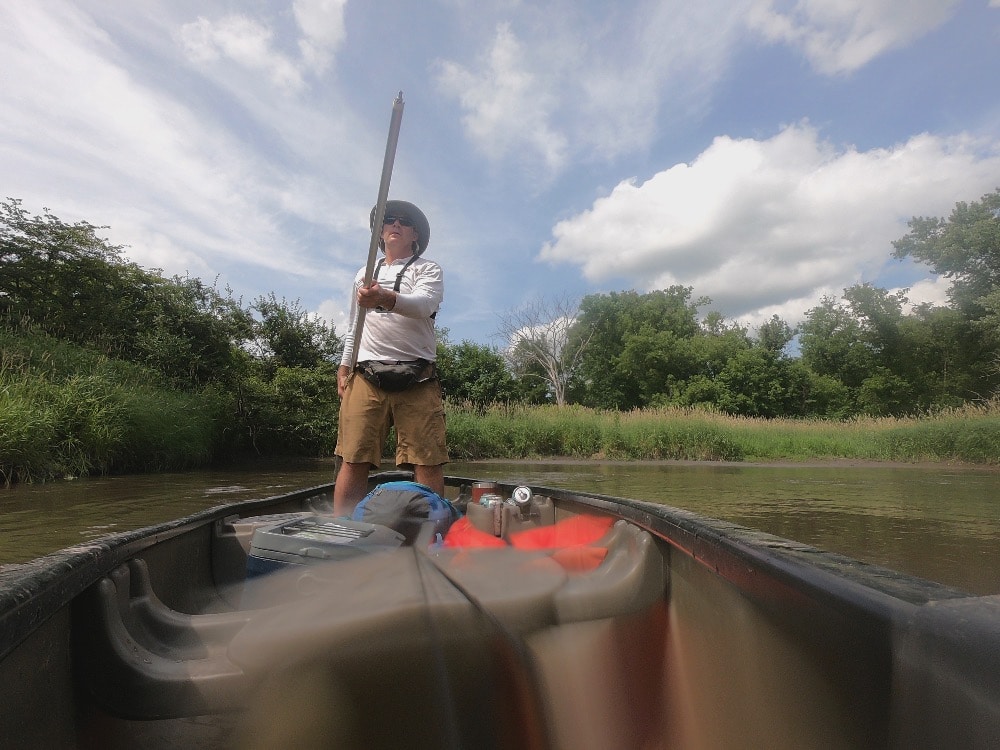
Using a Hayden Pole on the Pine River
It was a perfect maiden voyage. The Pine River is almost the ideal river to canoe pole. The river bottom is a mixture of sand, gravel, and mud although it was usually one or the other. I learned quickly that the slightly rocky bottom or sand is the best. With mud there is a danger that you might stick the pole in too far and not be able to pull it out. This happened to me within the first 15 minutes, and the failure to pull the pole out led me to lose my balance, and I fell backward. Fortunately, I did not spill my beer or capsize.
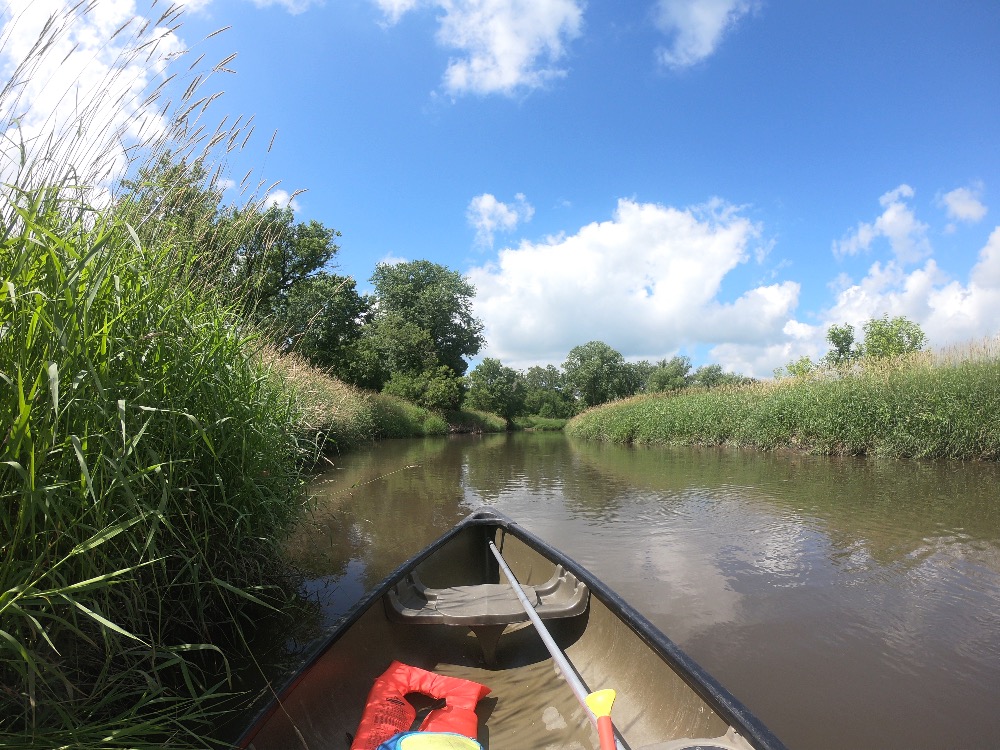
Hayden canoe pole inside my canoe on the Pine River
Intuitive experience
What I enjoyed about canoe poling is the intuitive experience. With every entry of the canoe pole into the water the poler is unsure how deep the river is and what the exact nature of the bottom is. You have an idea from the previous stroke, but there is no guarantee that the river is the exact same ten feet away from where you previously pushed off.
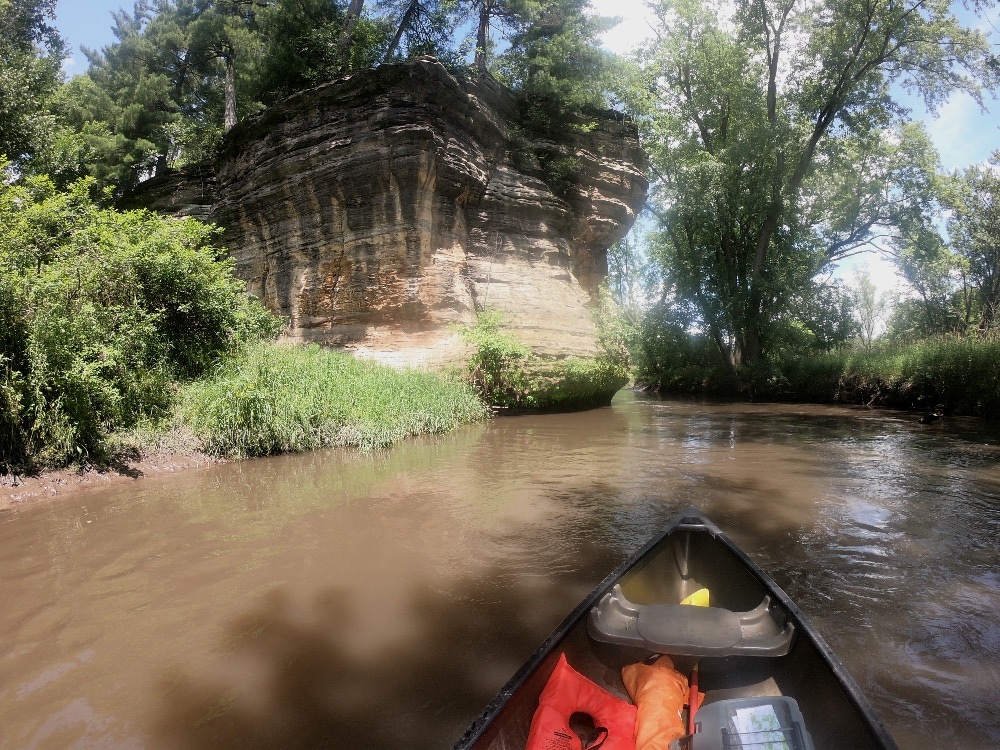
The places the Hayden canoe pole will take you
Therefore, it is necessary to feel the depth and river bottom before pushing off. If the water is shallow and sandy or gravely, one can push off rather firmly. If the river is deep or the bottom muddy, it is necessary to show a little restraint in order not to fall over due to the depth or get the pole stuck in the mud. This is especially true with a river like the Pine where the river bottom changes more often than other rivers.

Hayden canoe pole in hand as I canoe down the Chicago River
Canoe Poling the North Branch of the Chicago River
The second canoe pole session of the season was the North Branch of the Chicago River. I paddled this stretch with the Friends of the Chicago River. I was assigned to paddle with another canoe guide. Canoe poling a tandem canoe with a bow paddler was a little challenging. It can be done, but it takes some getting used to for both the stern and the bow. I prefer and recommend canoe poling only in a solo situation. If you have a tolerant bow paddler, it might not be a problem.
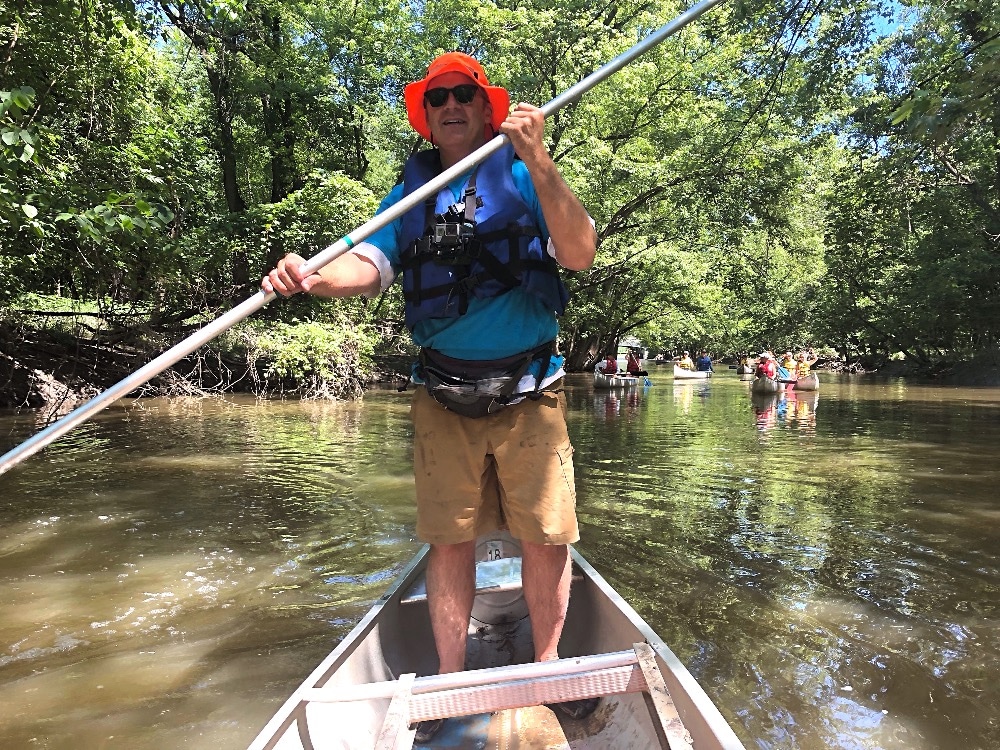
Volunteering with the Friends of the Chicago River
The North Branch from Willow Road to Dempster was similar in nature to the Pine River. There were no sandy stretches, but the bottom changed from gravel to mud. The Chicago River sections closer to the city and through the city are too deep to canoe pole.
Crystal River in Wisconsin
The shallow Crystal River in northern Wisconsin was my next canoe pole adventure. Usually shallow is good for canoe poling, but there were a few rapids that were too shallow. One one drop, I should have abandoned the pole and sat down with a paddle. I hit the rocks and jettisoned out of the canoe. Once again, I saved the canoe from actually tipping and my beer from spilling.
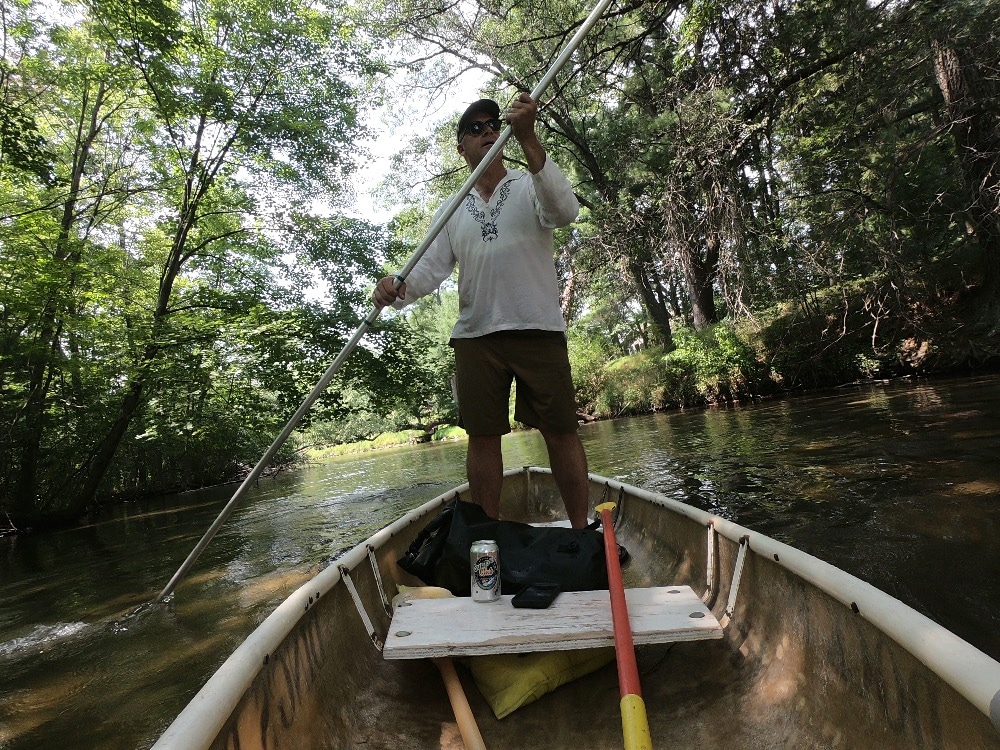
Poling the Crystal River Wisconsin
Kickapoo River
The Kickapoo River from Ontario to bridge 12 was the best section of canoe poling I did last year. It was shallow enough but not too shallow, the river bottom was never muddy, and the scenery was outstanding. The Kickapoo is one of the most loved paddling rivers in the Midwest and the canoe poling opportunities are just as amazing.
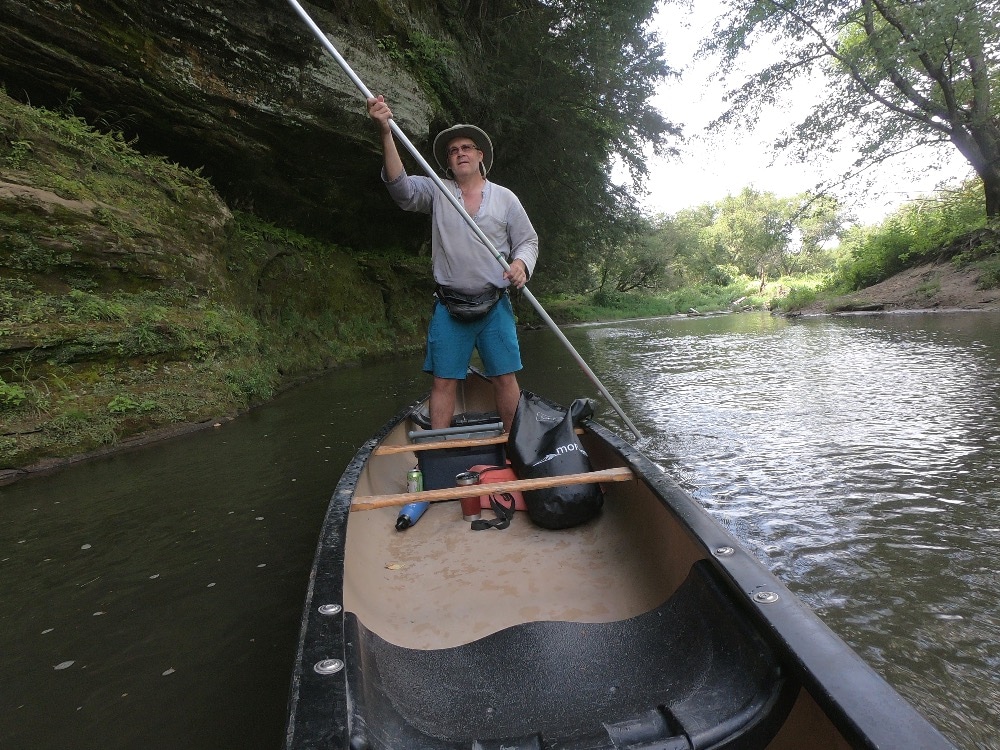
Using my Hayden canoe pole on the Kickapoo River

My favorite spot along the Kickapoo River
Wisconsin River
The Wisconsin River is completely sand bottom, so that is a plus, but the river channel is generally too deep. It is possible to use the canoe pole as a canoe paddle or double stroke like a kayak paddle. It is no problem to do these techniques for short periods until the river gets shallow, but this is not the optimal way to go down the river if the river is deep for long stretches. If you were canoe poling the Wisconsin solo, you could stay in the shallow channels, but this probably would not work when paddling with a group of tandem paddlers.

Looking back at our Wisconsin River village from the canoe while poling
I went on two Wisconsin River camping trips last summer. I brought the canoe pole on one of the trips and did some exploring by myself when we reached camp, but I did not use the pole when paddling with my canoe partner.
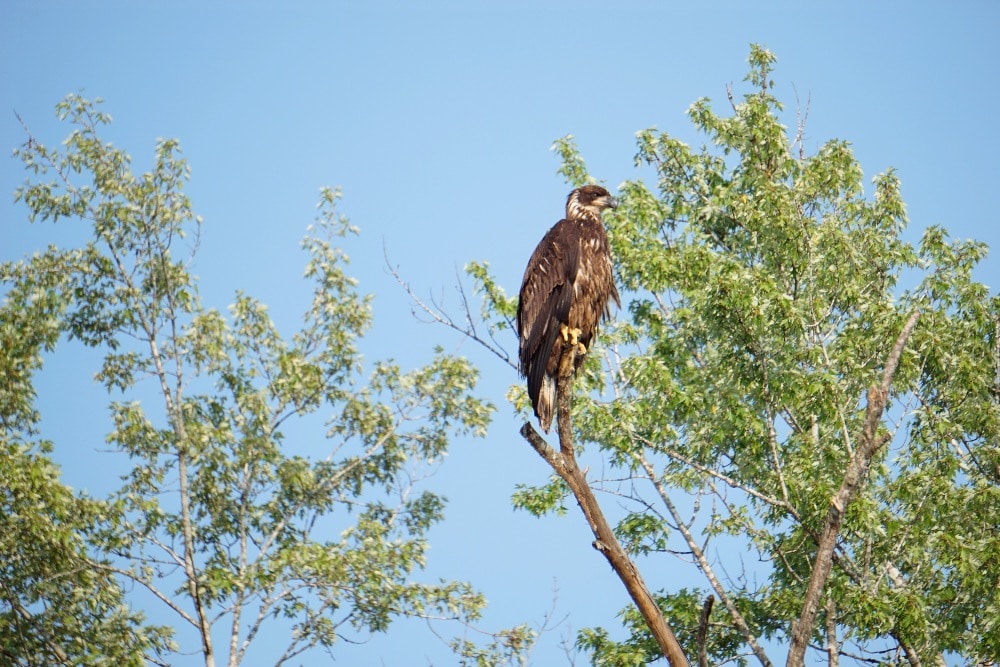
Easier to sneak up on wildlife like this immature bald eagle on the Wisconsin River when poling upstream
Canoe Poling the Ozark National Scenic Riverways
In September, I went with my dad and a few friends down to the Ozark National Scenic Riverways. We paddled one day on the Jacks Fork, two days on the Current, and one day on the North Fork of the White. The North Fork of the White is a little farther south and not technically part of the Ozark National Scenic Riverways although it is in the Ozark and quite scenic.
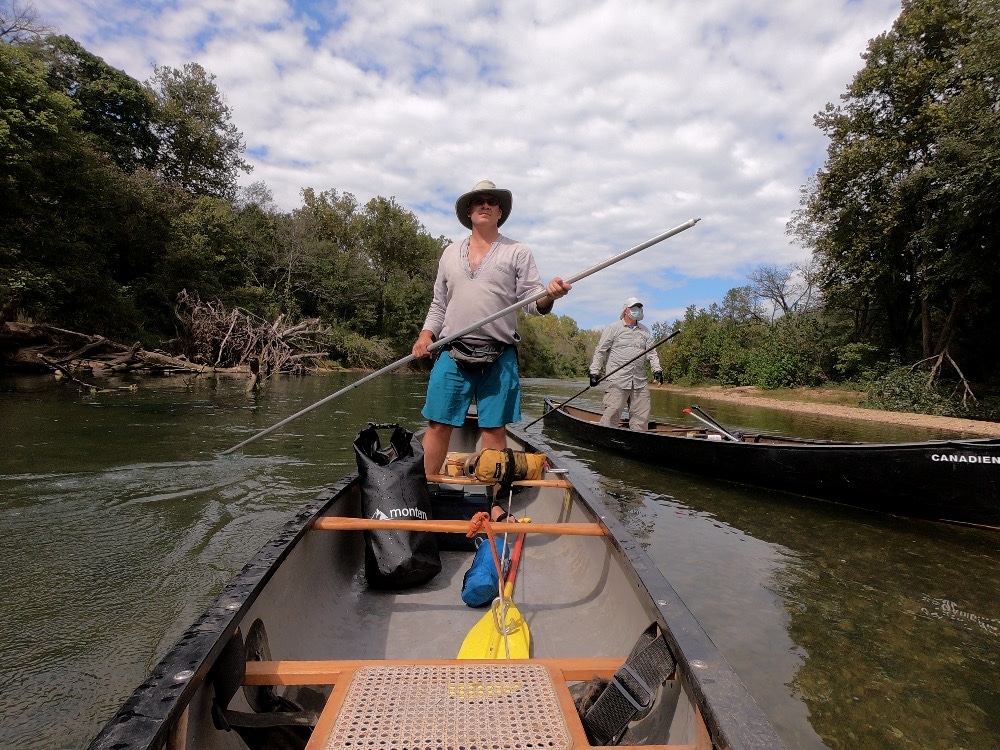
Dueling poles with my dad along the Jacks Fork River
The Jacks Fork and the Current were absolutely perfect for canoe poling. For the most part, both rivers were shallow and both rivers were almost predominately gravel. There are some stretches of rapids, but they are pretty easy to navigate. The only problem with these rivers is after some rapids, the water can get pretty deep. It is necessary to double paddle like a kayak through these sections.
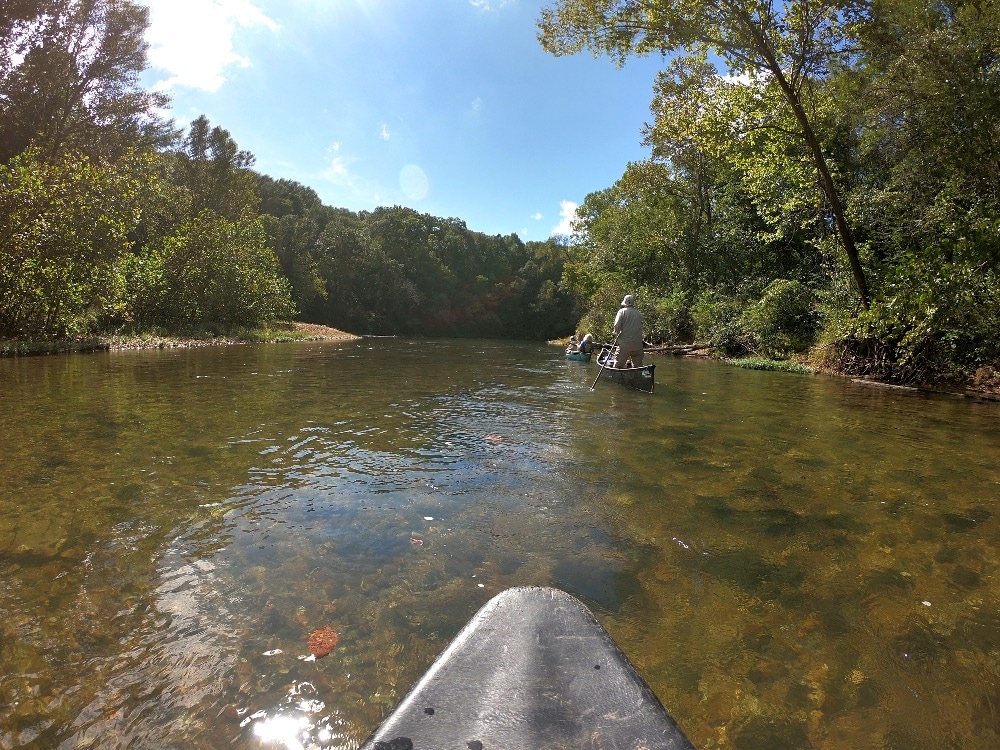
Following my dad down the Jacks Fork River
These rivers are crystal clear, which you would think would make it easier to gage depth, but doing this by sight can be misleading. The deep sections do not look that deep at first, so it is necessary to go easy on these sections when it is hard to decipher the river depth.
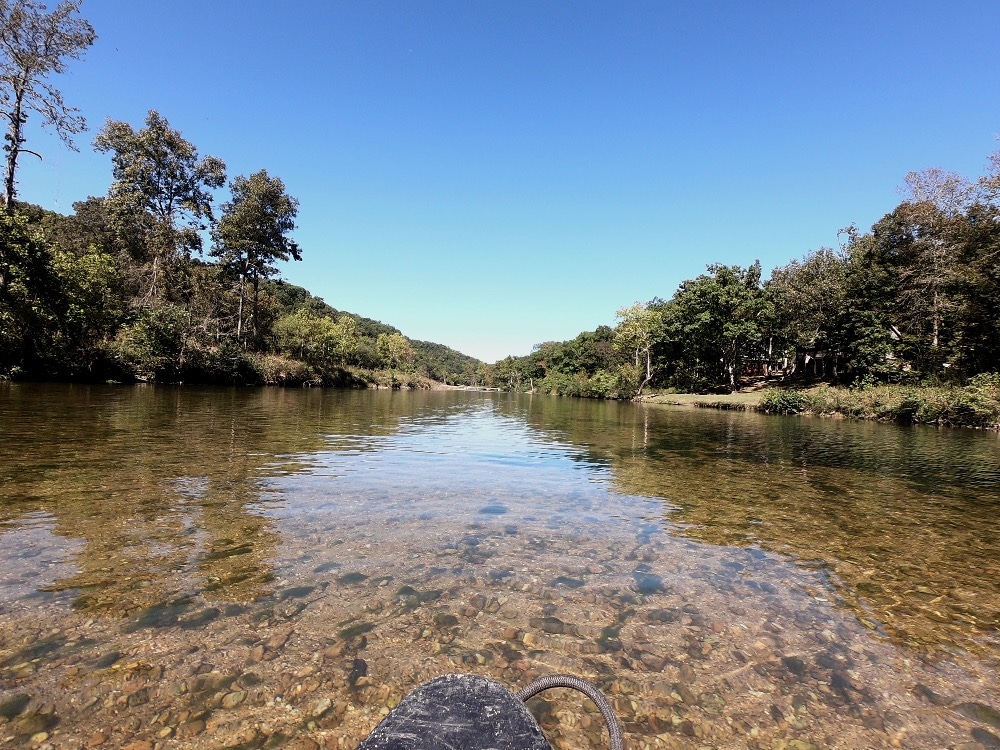
Gravely stretch of the North Fork of the White
North Fork of the White
The North Fork of the White was gravel bottom at times, but many sections of the river was solid limestone rock. These solid rock sections could be a little tricky. The pole sometimes slides when trying to push off. This can lead a canoe poler to tip if not careful. There are many cracks in the rock, so it is necessary to visually look for these and push off in the cracks where the pole will stick and not slide.
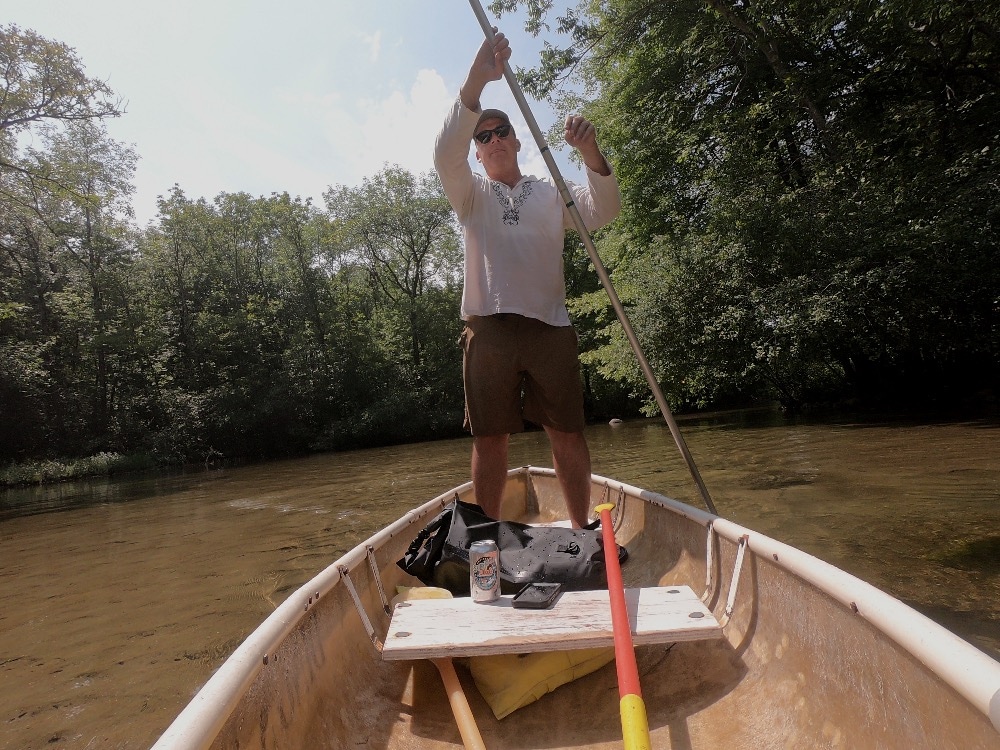
Crystal River canoe poling
Pros of canoe poling
I already pointed out that I enjoyed the intuitive experience of canoe poling. Each stroke is somewhat an unknown, so I find it more interesting than paddling. I also like the workout aspect of canoe poling. It is a similar experience to cross-country skiing as far as the upper body component. Canoe poling gives a good workout to your arms, shoulders, and back. If you pole hard enough, you can get a good aerobic workout too.
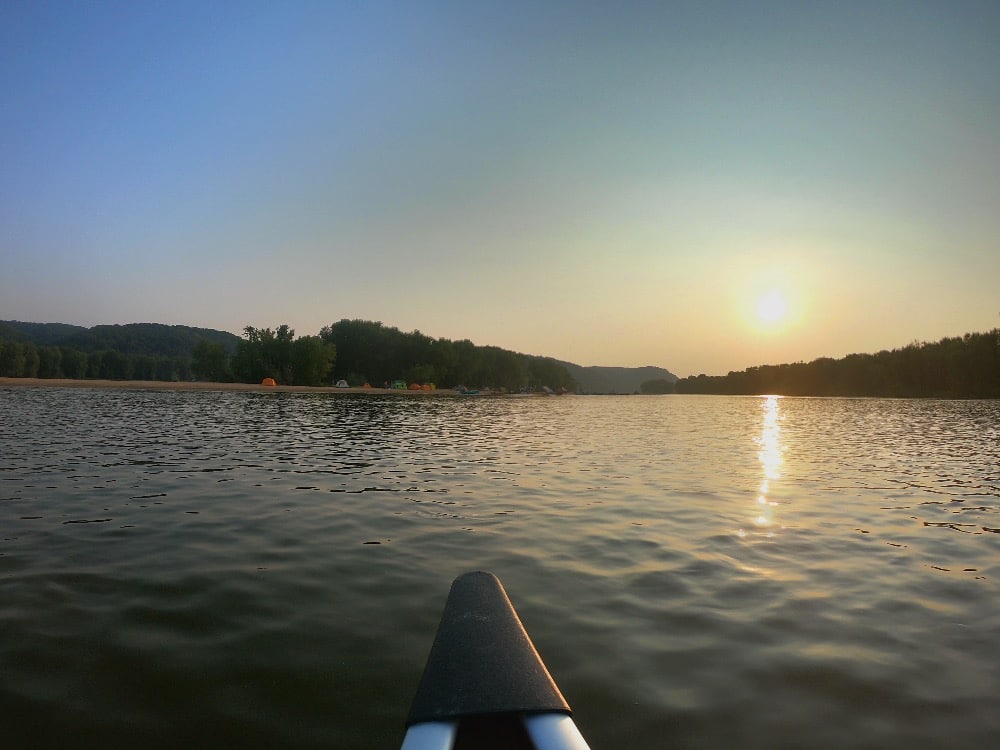
Wisconsin River sunset – the places the Hayden Pole will take you
I enjoy standing up in the canoe. There is a myth in the canoeing world that standing up is a big no-no. While it does take some getting used to, one is actually more balanced standing up in a canoe. When standing up you see more. You can read the river better, you see more wildlife, and you see more interesting things in the river like fish and turtles. I saw a cottonmouth on the North Fork of the White that I would have never seen sitting in the canoe.
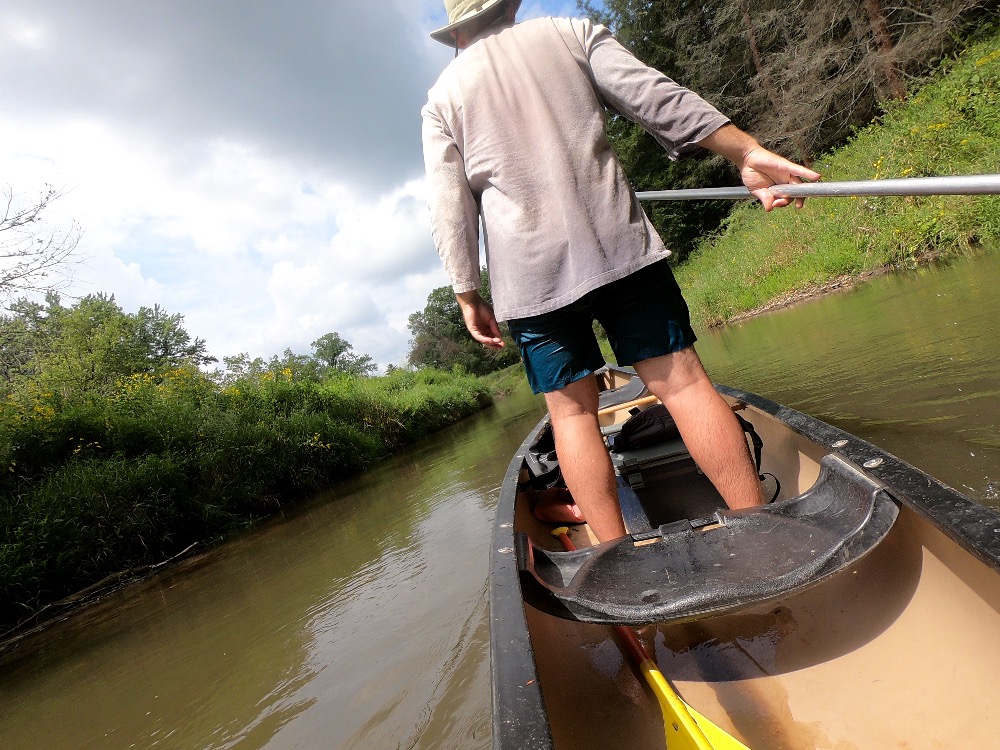
Looking forward to Hayden canoe pole season 2
Big thumbs up for the Hayden Canoe Pole
After one season of canoe poling, I am hooked on the activity and my Hayden Canoe Pole. It is lightweight and feels good in my hands. The only issue I had with it is sand got into the snaps that separate the two poles in half. This lead to the pole not separating. Eventually, I was able to get the button to work but it might be a good idea to carry some WD-40 in case sand gets into the buttons.
Adventure on!
The goal of this site is to inspire people to outdoor adventure travel and then provide tips. If you liked this post then sign up for the email newsletter. Notifications go out once three to four times a year with what is new with Traveling Ted’s adventures. Your email will not be share and you will receive no spam. Other e-follow options include Facebook (click on the like box to the right) or twitter (click on the pretty bird on the rainbow above).







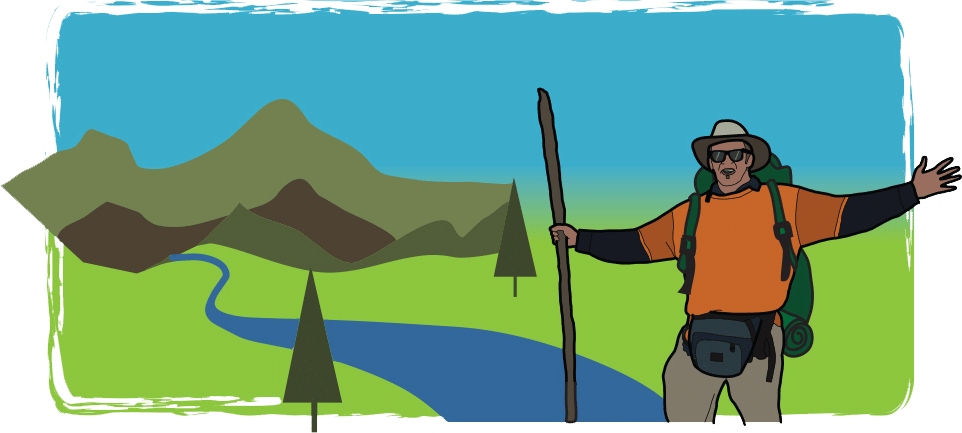

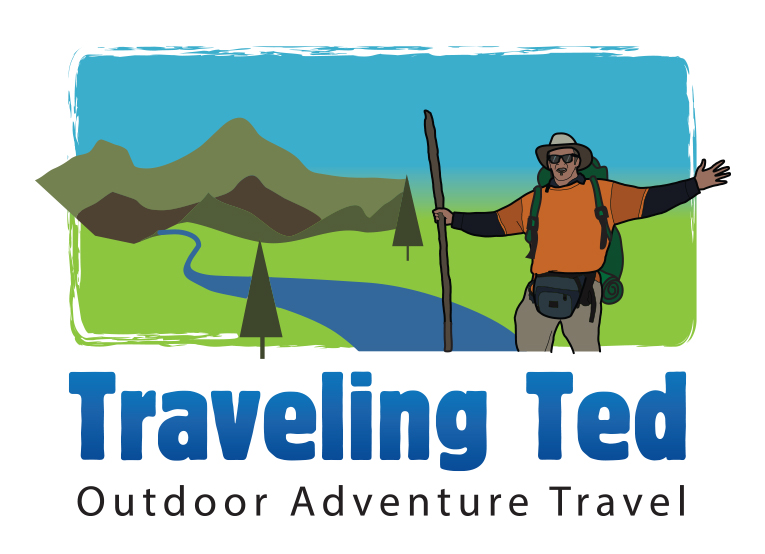
Beautiful pictures! Your travel stories are always so uplifting. 🙂 I have never tried canoeing but I think I should, because such activities really help you connect with nature.
Renuka Walter recently posted..How Do I Get Money To Travel?
Thank you Renuka. Come to Chicago and I will take you canoeing 🙂
Curious if the two piece pole is holding up ok? (I’ve been up the Allagash twice with Chip and Lani and once on the St. John).
Hello Alan,
So far so good. It is still going strong after two active canoeing seasons. The only issue I have had is that sometimes sand gets into the button and makes it difficult to detach. Once it is detached, I just wash it out and it works fine again.
Hi. I grew up on Jacks Fork and used to pole it frequently. It was nice to see other enjoying it with the old pole. Does the two piece have any (or developed) “play” in the two sections or does it feel like one pole? Thanks-Mike
Hello Mike,
Thanks for reading and the comment. That is awesome that you grew up along the Jacks Fork. What a great place to grow up. The pole feels like one pole. I do not do any intense whitewater or fast water. Perhaps if there was more stress on it that might happen, but I have been very happy with it after two years of use.